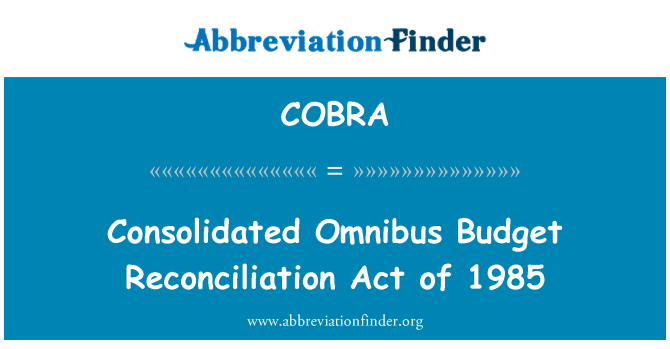

Typically with COBRA, insurance premiums are limited to the full cost of the coverage plus a 2 percent administration charge. Some states impose their own COBRA coverage requirements in certain circumstances. COBRA can be extended to 29 months for people with disabilities, and up to 36 months if there is a second qualifying event during the initial continuation coverage period, such as the divorce or separation of the employee and spouse. Had at least 20 full- or part-time employees during the previous year.Įmployers may require terminated workers who choose to keep their employer-sponsored health plan- generally for up to 18 months-to pay for COBRA coverage.

Most private-sector employers must offer COBRA health care continuation coverage if they sponsor a group health plan and "An AEI no longer is eligible for a subsidy upon the earliest of his or her becoming eligible for other group health plan coverage (that is not an excepted benefit) or Medicare or the expiration of his or her maximum COBRA period," the firm explained.ĪEIs are required to notify their group health plan if they become eligible for other ACA-compliant coverage during the subsidy period, after which the subsidy would end (even if the COBRA beneficiary does not enroll in the alternative coverage to which they become eligible), and they would be subject to penalties if they fail to do so. 30, 2021, is eligible for COBRA coverage due to an involuntary termination (other than for gross misconduct) or a reduction in hours and elects such coverage," noted law firm BakerHostetler. "An AEI is someone who, in the time periodīetween April 1 and Sept. Only assistance eligible individuals (AEIs) qualify for a subsidy, which exlcudes employees who voluntarily end employment. The federal government's subsidy for COBRA coverage premiums that assistance eligible employees would otherwise be required to pay will: The credit could also be advanced under rules that will be set by the Treasury Department. "If the credit exceeds the amount of payroll taxes due, the credit would be refundable when employers submit Form 941," their quarterly tax return, Bakich said. 30, 2021, up from an 85 percent subsidy in the House bill.Įmployers will obtain the subsidy through a payroll tax credit against employers' quarterly taxes, and will be responsible for paying health insurance carriers for the premiums, explained Kathryn Bakich, Washington, D.C.-based national health compliance practice leader at Segal, an HR and employee benefits consultancy.īoth fully insured and self-insured group health plans subject to federal COBRA are eligible for the credit against their Medicare FICA payroll taxes, and must provide the COBRA premium subsidy to assistance eligible individuals who have elected COBRA coverage, starting April 1.

When the Senate voted to pass the bill, it increased the government's subsidy to 100 percent of COBRA premiums for laid off workers and covered relatives from April 1 through Sept. The federal government will pay 100 percent of COBRA insurance premiums for eligible employees who lost their jobs and for their covered relatives through September, allowing them to stay on their company-sponsored health plan, under theĪmerican Rescue Plan Act (ARPA) that President Joe Biden signed into law on March 11.

See theĭOL Issues COBRA Subsidy Guidance and Model Notices. Department of Labor posted model notices and a set of FAQs to help employers comply with the federal COBRA premium subsidy put in place by the American Rescue Plan Act.


 0 kommentar(er)
0 kommentar(er)
